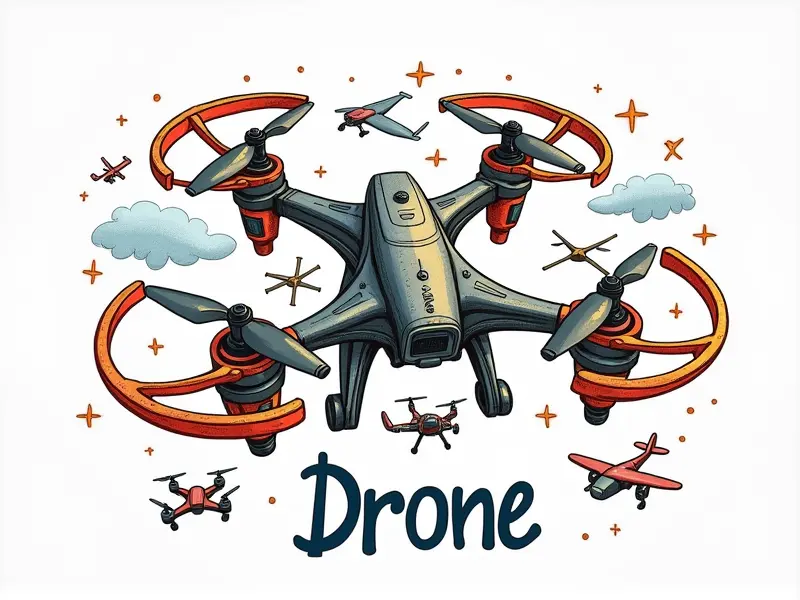Can I fly FPV drones in snow?

Can You Fly FPV Drones Safely in Snow?
Flying first-person view (FPV) drones in snow can be a thrilling and unique experience, but it's essential to understand the challenges and safety considerations involved. The cold weather and snowy conditions present specific risks that you must address before attempting an FPV drone flight.
Flying FPV Drones in Snow: Is It Possible?
Yes, flying FPV drones in snow is possible, but it requires careful planning and preparation to ensure a safe and enjoyable experience. The cold temperatures can affect your drone's battery life, camera performance, and overall functionality.
Tips for Flying FPV Drones in Snowy Weather
- Choose the Right Battery: Use high-capacity batteries designed to withstand low temperatures. Lithium-polymer (LiPo) batteries are a good choice, but ensure they’re fully charged and kept warm before use.
- Dress Appropriately: Wear layers of clothing to stay warm while flying. Hypothermia can be dangerous, so prioritize your safety over the drone's performance.
- Cover Your Gear: Protect your FPV goggles and other equipment from moisture by using waterproof covers or bags.
- Practice Indoor First: Before venturing out in snow, practice flying indoors to get a feel for the drone's behavior in cold conditions.
Challenges of Flying FPV Drones in Snow
Flying FPV drones in snowy weather presents several challenges:
- Battery Drain: Cold temperatures can significantly reduce battery life. Plan for shorter flight times and carry extra batteries.
- Snow Accumulation: Snow can accumulate on the drone's propellers, affecting its performance and stability.
- Poor Visibility: Snowfall or heavy snow cover can limit visibility, making it harder to navigate your FPV drone effectively.
Should You Try Flying FPV Drones in Snow?
If you're an experienced FPV pilot and enjoy a challenge, flying drones in the snow can be rewarding. However, beginners should start with more favorable conditions before attempting winter flights.
How Cold Can It Be for FPV Drone Flights?
The recommended temperature range for FPV drone flights is between 10°F (-12°C) and 50°F (10°C). Below this range, batteries may not function optimally, and the risk of equipment failure increases.
Winter WonderFPV: Flying Drones in the Snow
Flying FPV drones in snowy landscapes can offer breathtaking views and unique flight opportunities. The white canvas of snow provides a stark contrast to typical urban or rural settings, making for stunning aerial footage.
Navigating Snow with Your FPV Racing Drone
- Low Visibility: Be prepared for reduced visibility due to snowfall or fog. Slow down and fly cautiously to avoid collisions.
- Snowy Terrain: Flying over snowy terrain can be challenging due to uneven surfaces and potential obstacles hidden beneath the snow.
Exploring Snowy Terrain with FPV Drones
FPV drones are excellent tools for exploring snowy landscapes. They allow you to capture aerial footage of winter scenes, track wildlife movements, or simply enjoy the serene beauty from a unique perspective.
Is Flying FPV Drones Safe in Snow?
Flying FPV drones safely in snow requires careful preparation and adherence to best practices. Ensure your equipment is functioning properly, dress warmly, and be prepared for unexpected conditions that can affect flight performance.
How to Prep Your FPV Drone for Snow Flights
- Battery Warm-Up: Keep batteries warm before use. Use a battery warmer or keep them in your pocket until ready to fly.
- Clean Propellers: Regularly clean any snow accumulation from the propellers during flight to maintain optimal performance.
- Test Gear Indoors: Before venturing outside, test all components of your FPV setup indoors to ensure everything is working correctly.
Conclusion
Flying FPV drones in snow can be an exhilarating experience for seasoned pilots. By understanding the unique challenges and taking necessary precautions, you can enjoy winter flights safely and effectively. Always prioritize safety and prepare thoroughly before attempting to fly your drone in snowy conditions.

